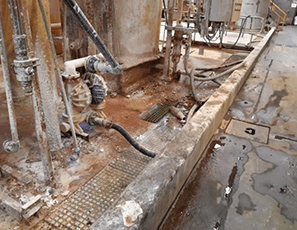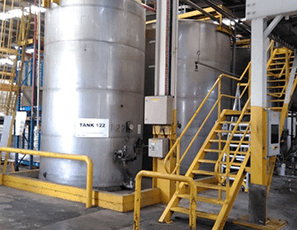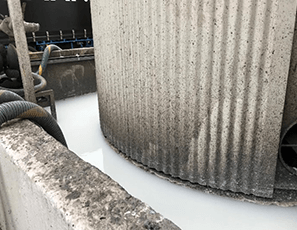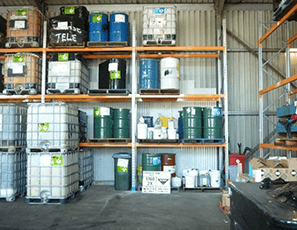Bunding requirements at liquid waste treatment facilities
Spills and leaks of liquids may pollute waters and land. Liquids must be stored and handled in a way which minimises the risk of pollution.
Bunding for hazardous liquid waste
Bunding is a form of secondary containment consisting of a raised, impermeable barrier used to retain liquids. The requirements for a bunded area vary according to the class of dangerous good being retained by bund.
See the appropriate Australian Standard to determine the bund specifications for the hazardous liquid wastes being stored at your premises.
EPA’s expectation of bunding onsite
The EPA has the following expectation regarding bunding at liquid waste treatment facilities:
- bunding should be able to contain a spill of the liquid type and amount being stored
- each bunded area should be impermeable to the type of liquid stored within the bund
- bunds should be regularly maintained to ensure there are no leaks
- bunds should be free from any solids or liquids that decrease the capacity of the bund
- bunding should be in place for unloading and reloading of storage containers
- different classes of dangerous goods should be stored in separate bunds to achieve minimum separation distances
- all chemical containers should be stored in bunded areas, be labelled and be in sound condition
Stormwater cut-off valves
Cut-off valves (or sluice gates) are the last line of defence in water pollution prevention. They can mean the difference between a spill being contained onsite or discharging offsite. The EPA expects that facilities storing hazardous liquids have a cut-off valve installed and that it is properly maintained and functional.
Licensing requirements
Environment protection licences have a standard condition for licensees to carry out activities in a competent manner and for all plant and equipment to be maintained in a proper and efficient condition. Operating in a competent manner includes the appropriate storage of hazardous liquid waste.
Resources
- Hazardous waste storage and processing (PDF 670KB)
- Storing and Handling Liquids (PDF 3.7MB)
- The drain is just for rain
- AS1894 The storage and handling of non-flammable and combustible liquids
- AS1940 The storage and handling of flammable and combustible liquids
- AS2507 The storage and handling of agricultural and veterinary chemicals
- AS2714 The storage and handling of organic peroxides
- AS3780 The storage and handling of corrosive substances
- AS3833 The storage and handling of mixed classes of dangerous goods, in packages and intermediate bulk containers
- AS4326 The storage and handling of oxidizing agents
- AS/NZS 2022 Anhydrous ammonia – Storage and handling
- AS/NZS 2927 The storage and handling of liquefied chlorine gas
- AS/NZS 4081 The storage and handling of liquid and liquefied polyfunctional isocyanates
- AS/NZS 4452 The storage and handling of toxic substances
- AS/NZS 4681 The storage and handling of Class 9 (miscellaneous) dangerous goods and articles



